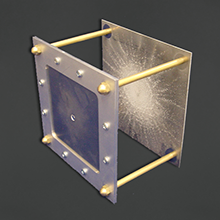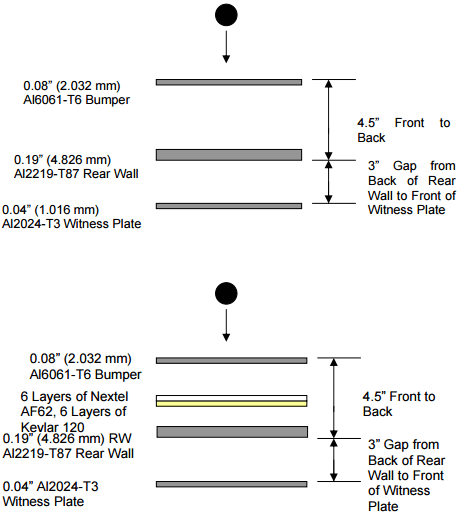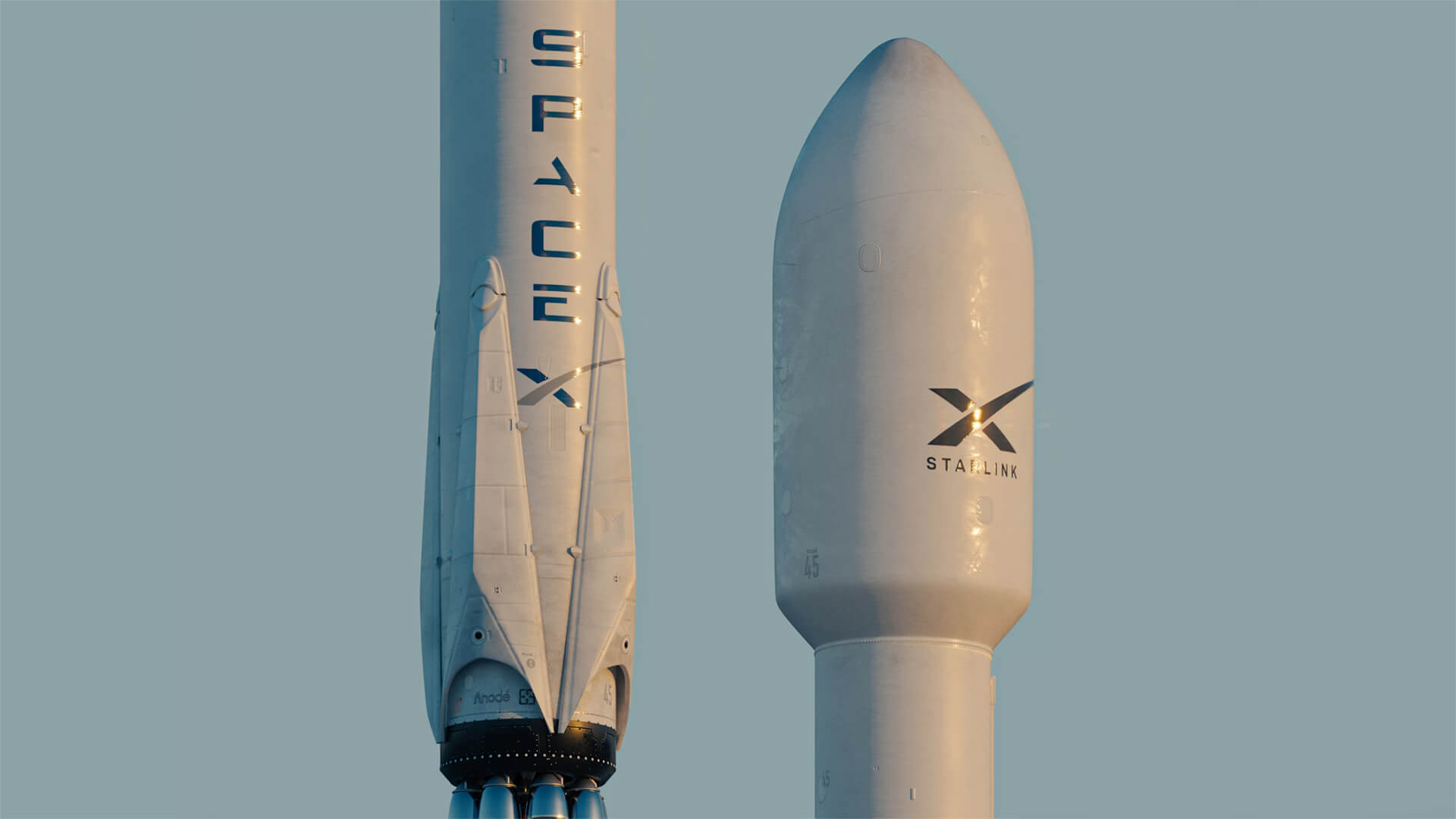Space may look empty, but even a speck of paint can strike like a bullet. In Earth's orbit, millions of tiny rocks and bits of junk whip around at approximately 10 km/s. At those speeds, a 1 cm fleck can hit with the energy of a 550-pound (250 kg) car at 60 mph, making "micrometeoroids" pose deadly threats to satellites and astronauts. Whipple shields are the secret multilayer armor that protects spacecraft. Invented in the 1940s by astronomer Fred Whipple, this design puts a thin, sacrificial bumper plate in front of the spacecraft. The bumper breaks up the projectile into a debris cloud; then, the main hull (and any intermediate layers) absorbs the fragments safely (Rakib, Smith, & Tafsirojjaman, 2024).

The Danger: Space Debris & Micrometeorites
Earth's orbit contains natural and man-made debris, from micrometeoroids (tiny meteors) to paint flecks and old satellite parts, all traveling at hypervelocity. NASA reports that both naturally occurring meteoroids and man-made “space junk” zip around at speeds averaging about 10 km/s (22,000 mph). Even a grain-of-sand-sized fragment at that speed packs a lethal punch: NASA notes a 1 cm fragment at 10 km/s delivers as much impact energy as a 550-pound object at 60 mph. In practical terms, these high-speed collisions can pierce hulls, rupture fuel tanks, and shower spacecraft with shards. The risk is especially acute because the tiniest objects cannot be tracked from Earth; even a paint chip or millimeter-scale fragment becomes a deadly hazard at orbital velocity. Over time, each collision creates more debris in a self-feeding cycle (the Kessler Syndrome), making future missions even riskier (National Research Council, 2011).
How a Whipple Shield Works
A Whipple shield works like layered body armor for spacecraft. The first (outer) layer is a thin sacrificial bumper placed some distance from the main structure. When a fast particle strikes this bumper, it does not stop the debris entirely but vaporizes and shatters it into a debris cloud. The resulting spray of smaller fragments then hits the next layer (often the spacecraft’s pressure wall or an inner shield). Because the fragments are smaller and spread out, the impact force is diluted over a larger area. As NASA explains, “The Whipple bumper disrupts the projectile, creating a debris cloud of smaller, less dangerous fragments; the force is then distributed over a wider area on the rear wall.” The bumper plate turns a single bullet-like strike into a harmless sprinkle.
Engineers often enhance Whipple shields by adding layers in between. The “stuffed Whipple” shield inserts fabrics (like ceramic Nextel and Kevlar) between the bumper and the rear wall. These intermediate layers further crush and slow the fragments, so that anything reaching the final hull is almost powerless. (NASA tested designs with multiple Nextel/Kevlar blankets and found they significantly improve protection compared to a plain two-layer shield.) In summary, each successive layer progressively weakens the debris: one plate splinters it, the next catches and absorbs the energy, leaving the spacecraft intact (Tafsirojjaman et al., 2024).

Real-World Examples
Whipple shields are not just theoretical; they are built into many spacecraft today. The International Space Station (ISS) is armored with hundreds of Whipple-type shields. Each exposed module or tank on the ISS uses multi-layer bumpers (often aluminum with Nextel/Kevlar fill) tailored to the direction of travel. Over 100 such shields protect the station’s critical areas. NASA’s tests show these shields are designed to stop a 1 cm aluminum sphere, the standard "design particle" threat.
Satellites and spacecraft routinely use the same idea. Fuel tanks and batteries, which can explode if punctured, are often shielded. In one recent mission, engineers took the ISS’s stuffed Whipple design and scaled it down to wrap a satellite’s fuel tank, because tanks have thin walls and face the highest debris flux. Remote sensors and cameras aboard satellites are also covered by small bumpers or multi-layer panels. Even spacewalking spacesuits carry tiny Whipple-like layers to protect astronauts. In short, whenever there are valuable systems or people onboard, spacecraft designers build space-grade shields to shatter incoming debris (Meyer & Bartush, 2018).

Why They Matter for the Future
Space debris is growing rapidly, so the collision risk keeps climbing. Researchers warn of a cascade effect where every break-up spawns more fragments (Kessler Syndrome). In that environment, long-duration missions and new spacecraft would be impossible without reliable shielding. Whipple shields provide passive, lightweight armor: they let satellites do double duty (for example, a thermal blanket can double as a debris shield) without needing heavy steel walls. This low-weight protection is critical because rockets have strict payload limits. As one NASA summary explains, advances in hypervelocity impact technology "develop advanced materials and protective shielding" to keep astronauts and equipment safe.
For the future—whether space stations, lunar bases, or crewed Mars journeys—shielding against micrometeoroids will be as vital as heat shields or life support. Every new spacecraft will likely carry Whipple-style bumpers tuned to its environment. In that way, even as debris increases, these humble multi-layer shields help spacecraft survive Earth's orbital shooting gallery (Christiansen et al., 2009).
Conclusion
In summary, a spacecraft may look fragile, but hidden behind those thin walls is engineered armor. Whipple shields are simple in design yet incredibly effective, making it possible for satellites and astronauts to operate safely among millions of hypervelocity projectiles. As we push toward deeper space exploration, these shields will remain essential, evolving with new materials to protect future missions. With Whipple shields, humanity can confidently explore the cosmos, shielded from orbital debris hazards.



